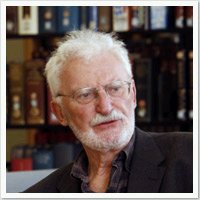Facts for Kids
Heinrich Rohrer was a Swiss physicist known for inventing the scanning tunneling microscope and winning the Nobel Prize in Physics in 1986.
Overview
Personal Life
Published Works
Awards And Honors
Scientific Career
Legacy And Influence
Early Life And Education
Impact On Modern Physics
Collaborations And Partnerships
Death And Posthumous Recognition
Contributions To Scanning Tunneling Microscopy

Inside this Article
Nanotechnology
Switzerland
Gerd Binnig
Electronics
Technology
Creativity
Community
Mountains
Writing
Science
Zurich
Did you know?
🇨🇭 Heinrich Rohrer was born on June 6, 1933, in Zurich, Switzerland.
🔬 He invented the scanning tunneling microscope (STM) in the 1980s.
🏆 Rohrer shared the Nobel Prize in Physics in 1986 with Gerd Binnig.
🕵️♂️ The STM allows scientists to see tiny particles like atoms on surfaces.
💼 He worked at IBM's Zurich Research Laboratory where he developed the STM.
🌱 The STM can see things 100 million times smaller than a grain of sand!
🚀 Rohrer’s work has led to advances in electronics, medicine, and nanotechnology.
📝 He published many scientific papers helping people understand tiny particles.
🌟 Rohrer inspired many students to explore careers in science.
🌹 He passed away on May 16, 2023, but his legacy still inspires people today.
Introduction
️♂️🔬 In 1986, Rohrer won the Nobel Prize in Physics for his amazing work with Gerd Binnig. Together they helped us understand the invisible world and changed how we study materials. Their invention opened new doors in science and technology, showing us how tiny things can have a big impact!
Personal Life
Published Works
Awards And Honors
Scientific Career
The microscope changed how scientists studied surfaces and built new materials, like those used in computers. Rohrer’s career was filled with research that pushed boundaries, making incredible contributions to the field of physics!
Legacy And Influence
Early Life And Education
Impact On Modern Physics
Collaborations And Partnerships
Death And Posthumous Recognition
Contributions To Scanning Tunneling Microscopy
It uses electricity to "feel" the surface of materials. When the STM gets close to an atom, it can measure tiny changes in electricity, allowing scientists to "see" the atoms without actually touching them. This technique helped researchers discover the structures of new materials and develop new technologies. Rohrer and Binnig's STM showed how small matters could reveal big secrets in the world of physics, leading to new discoveries in nanotechnology and materials science!

